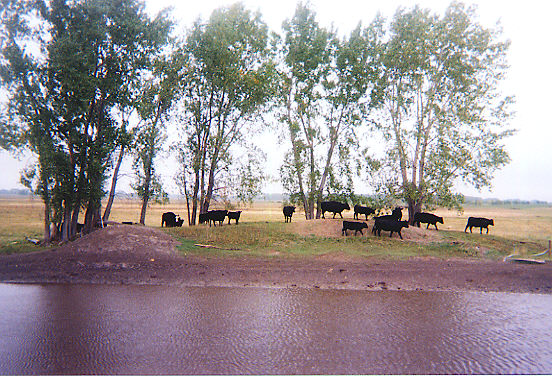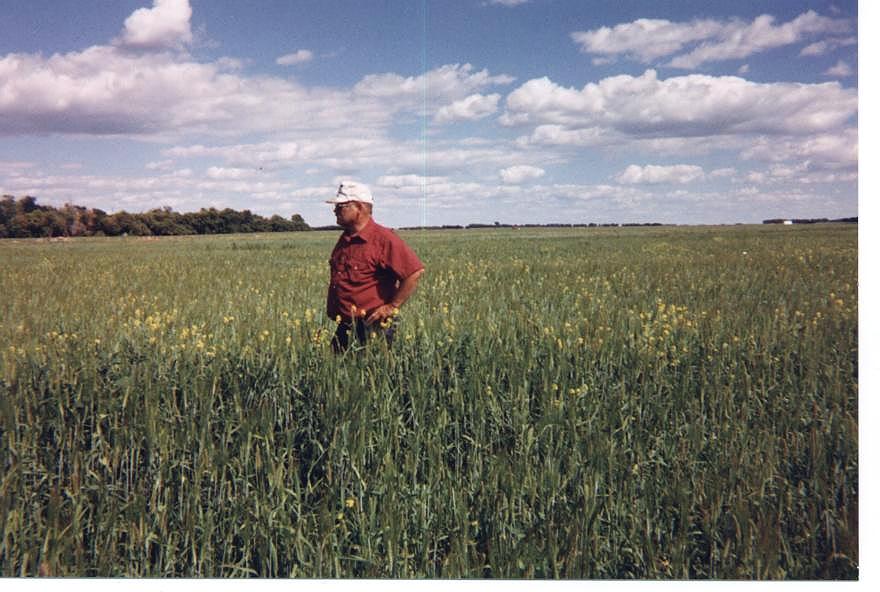|

|
| summer day at the waterhole |
Our goals are to work in cooperation
with Mother Nature. We have been implementing managed intensive grazing practices since 1995. This grazing practice
resembles when the big buffalo herds roamed the US. Managed intensive grazing focuses on plant developement for optimum
forage quality and production. We are finding many benefits with these practices, including increased stocking rate,
increased water retention and also an increase in wildlife habitat.
We graze our own livestock and also custom
graze for other owners. On average, we move 200-300 head every 2-3 days. The cattle become quite easy to move
by the end of the grass season. We feel this is one of the most sustainable practices we can do to improve our range
land.Since our grandchildren help us with these practices,they are more aware of nature and cattle handling. What better way
to spend quality time together!!
| Grazing and feeding trial |

|
| Double cropping spring seeded crop |
In 2002 we are seeding previous crop
land to a mixture of spring seeded cereal crops, of oats, barley and fall rye. We will be strip grazing these acres
until a killing frost. At that time, we will be using a corn crop as our winter forage supply, supplemented as needed. We
will be strip grazing the corn using portable electic fencing. Our goal is to reduce winter feeding cost. By strip
grazing, we can use a team of horses to move our fence every few days, eliminating the need to start a tractor everyday
in the winter.
With our many tree rows, we have good protection for the cow
herd that will be wintered on this ration. We will calve our cows on the corn stubble, thus also reducing potential
scour and disease problems. These cows will calve in tune with nature, so will start calving in late April.
This also reduces the cows nutrient requirements during the coldest months of the year. For this to work properly, you
must have a cow that is bred to utilize forages and can rustle for their feed.
|

